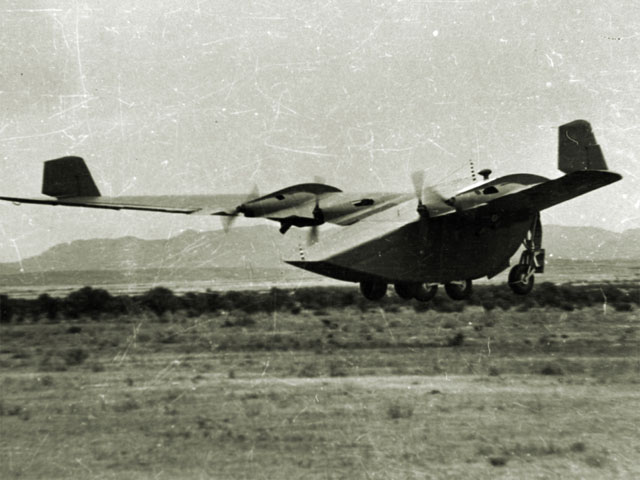FMA IAe 38 on:
[Wikipedia]
[Google]
[Amazon]
__NOTOC__
The DINFIA IA 38 was a 1960s Argentine four-engine

experimental
An experiment is a procedure carried out to support or refute a hypothesis, or determine the efficacy or likelihood of something previously untried. Experiments provide insight into cause-and-effect by demonstrating what outcome occurs when a ...
tailless transport aircraft Transport aircraft is a broad category of aircraft that includes:
* Airliners, aircraft, usually large and most often operated by airlines, intended for carrying multiple passengers or cargo in commercial service
* Cargo aircraft or freighters, fix ...
, designed under the direction of Reimar Horten and based on the German
German(s) may refer to:
* Germany (of or related to)
** Germania (historical use)
* Germans, citizens of Germany, people of German ancestry, or native speakers of the German language
** For citizens of Germany, see also German nationality law
**Ge ...
Horten Ho VIII project and built by the DINFIA.
Development
The IA 38 was an experimentalcargo aircraft
A cargo aircraft (also known as freight aircraft, freighter, airlifter or cargo jet) is a fixed-wing aircraft that is designed or converted for the carriage of cargo rather than passengers. Such aircraft usually do not incorporate passenger ...
based on research by Reimar Horten. The design was developed to meet a 1950 requirement for an aircraft to carry citrus fruits (and in particular, oranges) from the west of Argentina to Buenos Aires
Buenos Aires ( or ; ), officially the Autonomous City of Buenos Aires ( es, link=no, Ciudad Autónoma de Buenos Aires), is the capital and primate city of Argentina. The city is located on the western shore of the Río de la Plata, on South ...
, there being no rail links while the roads were inadequate for heavy trucks.Green & Swanborough 1989, pp. 17–18Magnusson 2009, p. 128 It was an all-metal tailless shoulder-wing swept monoplane, with the vertical control surfaces located near the tips of the wings. The short, stubby fuselage was fitted with a tricycle landing gear, with a retractable nosewheel and fixed mainwheels.Green & Swanborough 1989, p18Magnusson 2009, pp. 128–129 Power was provided by four radial engine
The radial engine is a reciprocating type internal combustion engine configuration in which the cylinders "radiate" outward from a central crankcase like the spokes of a wheel. It resembles a stylized star when viewed from the front, and is ...
s mounted within the wings, driving pusher propellers mounted clear of the wing trailing edges. The aircraft was designed to use I.Ae. 19R El Indio, but these were not available and the prototype was forced to use I.Ae. 16 El Gaucho engines instead. A crew of two were sat in an enclosed cockpit above the leading edge of the wing. A cargo compartment within the fuselage had a capacity of (with a load planned) and could be accessed by a clamshell rear cargo door that could be opened in flight to allow air-dropping of loads.
Development work and construction of the prototype was slow, and was further slowed down by the '' Revolución Libertadora'' of 1955 that overthrew the government of Juan Perón. While work restarted in 1958, the prototype only made its first flight to 9 December 1960. The IA 38 proved to be difficult to control, and was underpowered, giving a poor performance, while the engines also suffered from overheating. The prototype made three more test flights before the project was cancelled in 1962.
After the project was cancelled, the IA 38 was placed in the grounds of the Aeronautical School, where it was used as a static display until a fire (suspected to have been an act of arson) destroyed the aircraft's skin. The remains of the plane were scrapped afterwards.

Specifications (IA 38 - performance estimated)
See also
Notes
Bibliography
* Green, William & Swanborough, Gordon. "Horten Exotica...to the H IX and beyond." ''Air Enthusiast
''Air Enthusiast'' was a British, bi-monthly, aviation magazine, published by the Key Publishing group. Initially begun in 1974 as ''Air Enthusiast Quarterly'', the magazine was conceived as a historical adjunct to ''Air International'' maga ...
'', No. 39, May–August 1989, pp. 1–18. .
* Magnusson, Michael. "FMA : from 1945: The story of Fabrica Militar de Aviones, Argentina: Part 8: Horten and other activities in the 1950s." ''Air-Britain Archive'', Autumn 2009. pp. 127–130. .
* Pelletier, Alain J. "Towards the Ideal Aircraft: The Life and Times of the Flying Wing, Part Two". ''Air Enthusiast
''Air Enthusiast'' was a British, bi-monthly, aviation magazine, published by the Key Publishing group. Initially begun in 1974 as ''Air Enthusiast Quarterly'', the magazine was conceived as a historical adjunct to ''Air International'' maga ...
'', No. 65, September–October 1996, pp. 8–19. .
* The Illustrated Encyclopedia of Aircraft (Part Work 1982-1985), 1985, Orbis Publishing
* Taylor, John W. R. ''Jane's All The World's Aircraft 1961–62''. London: Sampson Low, Marston & Company, 1961.
External links
{{FMA aircraft 1960s Argentine experimental aircraft Tailless aircraft FMA aircraft Four-engined pusher aircraft High-wing aircraft Aircraft first flown in 1960